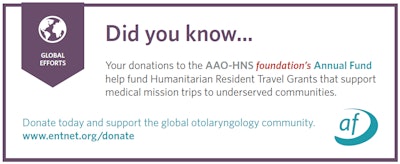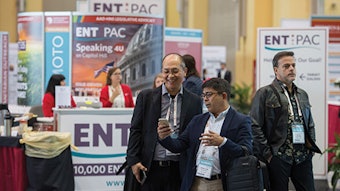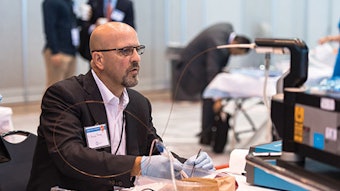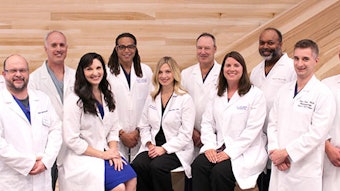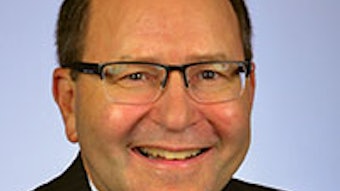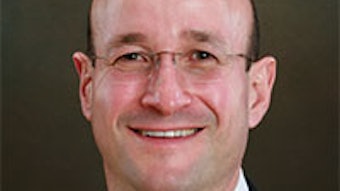Humanitarian service in Lambayeque, Peru
This winter I had the opportunity to travel to Lambayeque, Peru, to help the Foundation for the Advancement of Cleft Education and Services (FACES) on a medical mission. My experience was truly remarkable and humbling.
Sunthosh K. Sivam, MD, Resident Grant Awardee
This winter I had the opportunity to travel to Lambayeque, Peru, to help the Foundation for the Advancement of Cleft Education and Services (FACES) on a medical mission. My experience was truly remarkable and humbling.
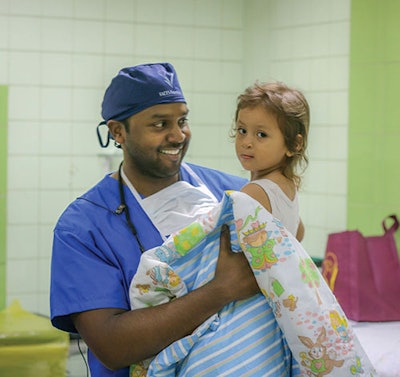 Dr. Sivam carries a returning patient to the operating room.
Dr. Sivam carries a returning patient to the operating room.From the moment we arrived, members of the local Lions Club were at the airport to greet us. Their excitement for the return of the FACES team, which had been coming to the region for many years, spoke to the enormous impact this team previously made on this community. I was moved to be a part of such an outstanding team.
I was new to surgical mission trips, but I was happy to have so many experienced individuals with me. Everyone, from the volunteer translators to the attending surgeons, helped get the supplies organized. All members of the team played a vital role. An immense amount of time and effort went into organizing supplies, instruments, operative schedule, and team assignments. This proved to be integral for the efficiency of the mission.
Dana S. Smith, MD, served as the lead of the surgical team, and the work he had put in prior to our arrival was invaluable. As I learned during the course of the trip, he had travelled with the Lions Club to more remote adjacent regions of Peru to evaluate children with cleft lip and palate many months prior to the current trip. This streamlined access to care for these children. The importance of the continuity and consistency of this trip was clear to me. This intentional effort truly allowed for the best possible care of these patients.
The cohesive team efforts and incredible degree of flexibility demonstrated by all members of the team allowed for a smooth operative experience for all involved. By the end of the mission, 49 patients had surgery for disorders related to cleft lip and palate. Many of these patients represented continuity in care that was truly incredible to see while in Peru. This reinforced the power of a well-established organization bringing consistent care to these regions.
As a medical student, I participated in a curriculum aimed to educate us on global health initiatives. One of the major concerns with surgical mission trips included a lack of continuity. In this case, I was happy to learn how an organization can effectively combat this weakness.
Overall, I am thankful to the AAO-HNS Foundation for providing the travel grant that allowed me to have this experience. Surgical missions, especially dealing with complex pathologies such as cleft lip and palate, are intricate programs to carry out in a sustainable and effective manner. We can make lasting positive impacts on communities with the investment of time, effort, and determination to make a difference.
